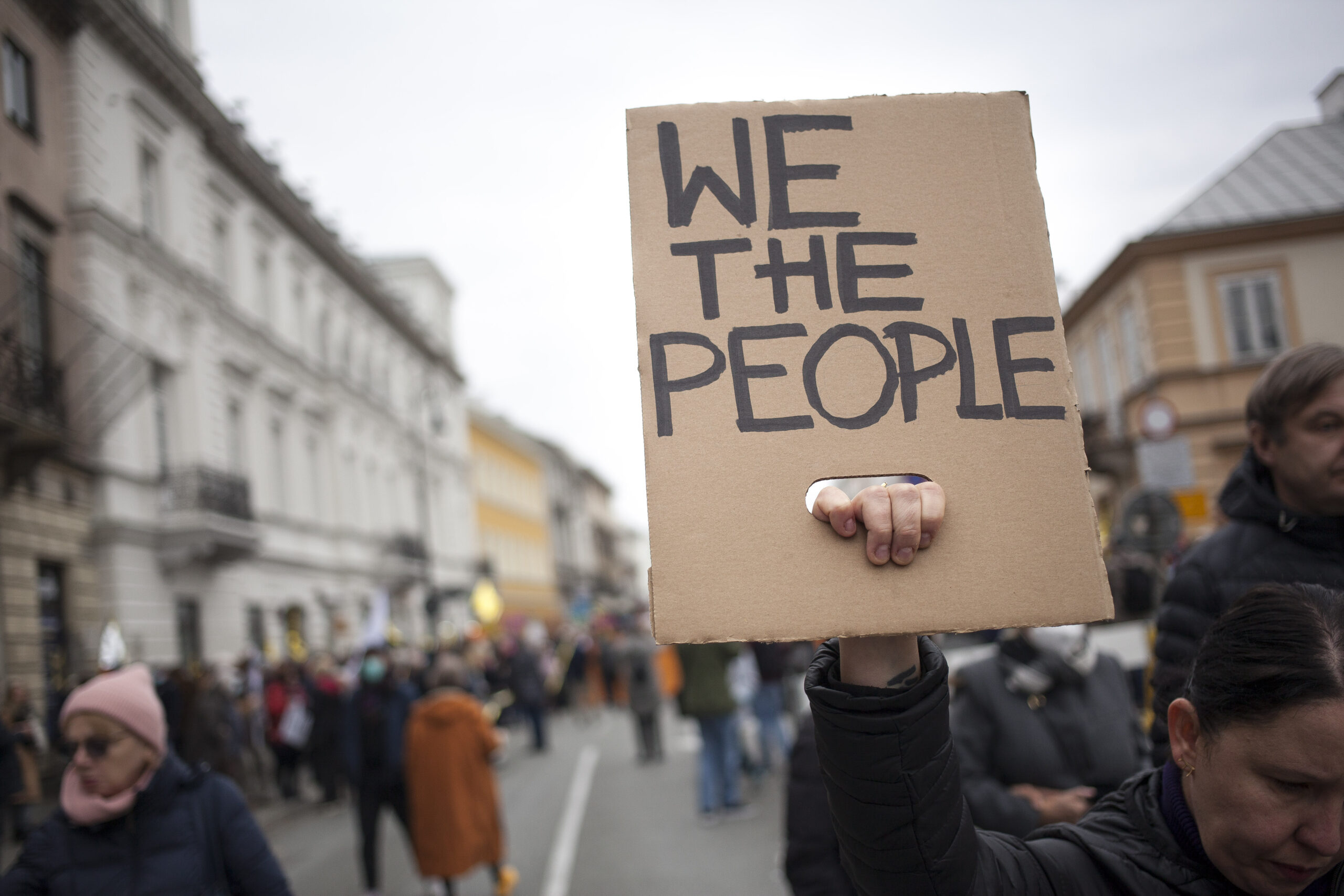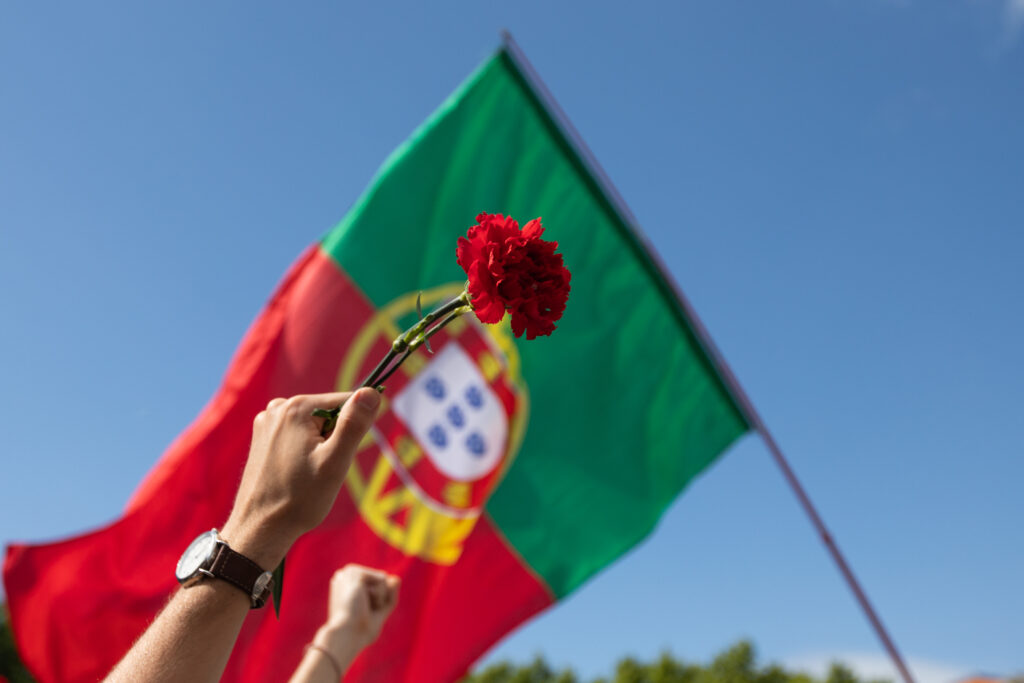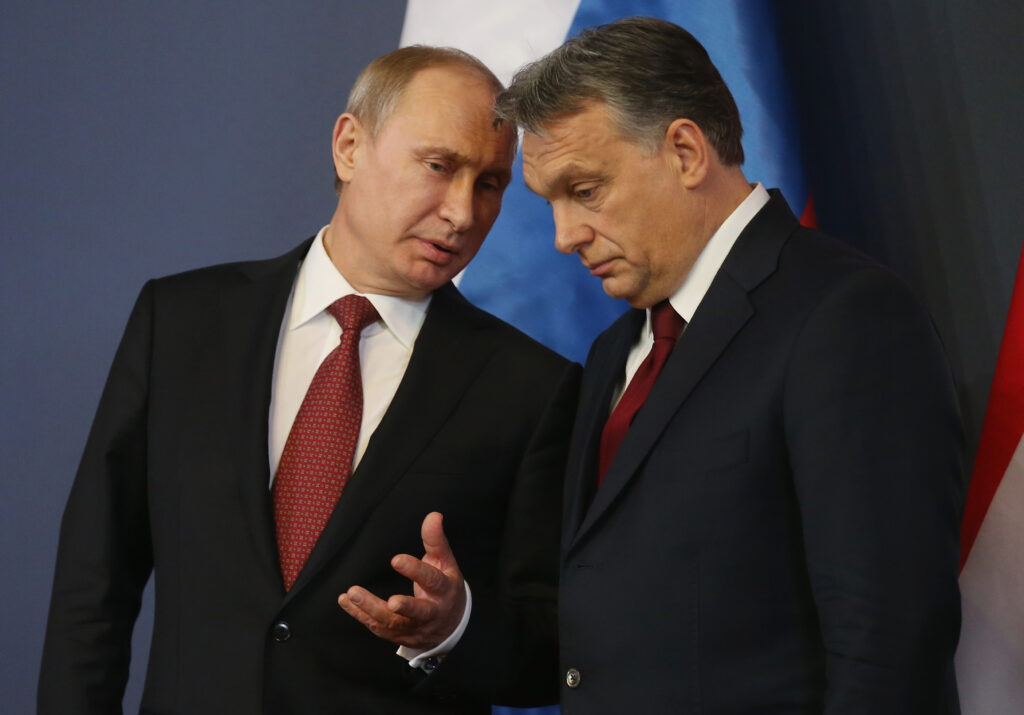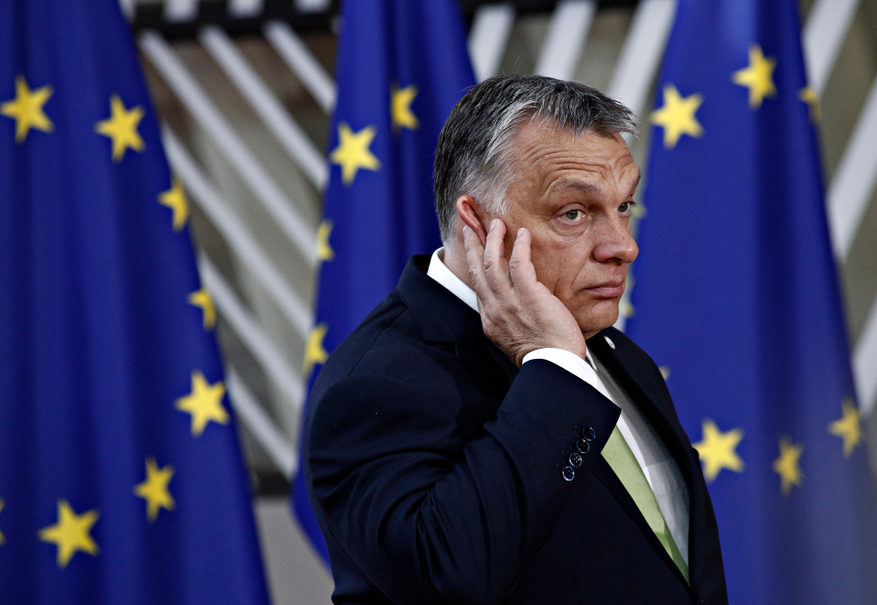
We have long assumed democracy and liberalism went hand in hand. But in truth there have always been tensions between them, and the rise of illiberal democracy cannot be ignored.
July 2025
The word “democracy” has a long and complex history. By the twentieth century it had become the standard way of describing the kind of political regime that prevailed in the United States and among its leading allies in the First World War. The goal of American participation in that war, as President Woodrow Wilson stated in a speech to a joint session of Congress on 2 April 1917, was to make “the world safe for democracy.”
Immediately after uttering this now famous phrase, Wilson added that the peace the war aimed to secure “must be planted on the tested foundations of political liberty.” Wilson presented the goals of democracy and of political liberty as being fully harmonious. This had not been the view expressed by the American Founders. The authors of the Federalist papers emphasized the dangers that popular majorities pose to minority and individual rights. According to James Madison, “pure” democracies like those of the ancient world “have ever been found incompatible with personal security, or the rights of property; and have in general been as short in their lives as they have been violent in their deaths.” In Federalist 10, Madison presents the case for the extended republic, which was intended to remedy the faults of earlier democracies.
By the twentieth century, however, democracy was a term regarded favorably by most Americans, who would probably have shared Wilson’s view that democracy is the only form of government that can be relied upon to preserve liberty. Indeed, the word democracy came to be widely understood as a shorthand description of a regime in which the people not only elect their own leaders but also enjoy a wide degree of individual freedom protected by the rule of law.
Sometimes the adjective “liberal” was coupled with the noun “democracy” to highlight the importance of individual liberty for democracy. Today the word “liberal” can have even more — and more varied — meanings than the word “democracy.” In Europe “liberal” is often applied to parties that are friendly to free markets, while in the United States it typically refers to those who support a larger role for government. In the phrase “liberal democracy,” however, the word liberal is meant to evoke not a particular economic ideology but the broader notion of a regime that is dedicated to human freedom.
Despite the close affinity between liberalism and democracy, it is useful to consider not just what unites them but also what distinguishes them from each other. For there are ways in which liberalism can be in conflict or at least in tension with democracy. Indeed, I would say that liberal democracy should be thought of not as a simple or unmixed kind of regime, but rather as a composite form that must strive to harmonize and knit together two distinctive components — a liberal element and a democratic one.
The democratic element aims to ensure that power ultimately resides with the majority of the people, while the liberal element seeks to ensure that democratic rule does not infringe on the individual liberties of citizens. The contemporary understanding of the democratic principle requires that those who hold political office be chosen in free and fair elections with universal and equal suffrage. The liberal principle, on the other hand, requires that all citizens enjoy the freedoms of speech, assembly, and religion, and that their rights are protected by the rule of law.
During the twentieth century, the compatibility of liberalism and democracy came to be taken for granted. In addition to the theoretical links between them, there were sound empirical reasons for thinking that democracy and liberalism went together. During the postwar era, countries that chose their rulers through free and fair elections were overwhelmingly more likely to protect the individual rights of their citizens than were countries with unelected leaders. At the same time, it was virtually impossible to find countries that failed to hold democratic elections and yet were liberal with regard to protecting individual liberty.
Today, however, I think it is fair to say that the conjunction between democracy and liberty is no longer taken for granted. In fact, over the past few decades a lively political and scholarly debate regarding the relationship between democracy and liberalism has emerged. Energizing this debate has been the open endorsement by Hungary’s Prime Minister Viktor Orbán of what he calls “illiberal democracy,” which he asserts is superior to liberal democracy.
But before analyzing the current debate about illiberal democracy, I ought to add a bit more about the very dissimilar historical origins of democracy and of liberalism. Democracy was born in the Greek city-states of classical antiquity, especially Athens. In these polities, ordinary citizens played a much more active role in governing themselves than they do today. Yet the ancient city was not liberal in the sense of guaranteeing individual liberty. Despite the enormous collective power they exercised in directly governing the city, individual citizens were in “complete subjection” to the “authority of the community.” As the French political thinker Benjamin Constant concluded in his famous essay “The Liberty of the Ancients Compared with That of the Moderns” (1819), “The ancients . . . had no notion of individual rights.”
Unlike democracy, liberalism is a modern invention. At its core is the idea of individual rights introduced by seventeenth-century philosophers like Thomas Hobbes and John Locke. These thinkers taught that all human beings are equally endowed with natural rights, but this did not mean that they were proponents of democracy. Hobbes was a monarchist. Even Locke, the most influential champion of liberalism, while endorsing the right of the people to choose their form of government, argued that they were entitled to decide in favor of a monarchy, an oligarchy, or another form of government that was not democratic.
Throughout the nineteenth century, political thinkers discussed both the advantages and the threats to liberty that would come from extending the franchise to the wider population. One may say that the modern concept of liberal democracy is itself a kind of mixed or hybrid regime that exhibits both democratic and liberal characteristics.
Following the Second World War, however, the connection between liberalism and democracy came to seem much more salient than the differences that might separate them. This reflected the postwar constellation of regime types in the world: The most powerful and prosperous countries were Western liberal democracies, whose political orders paired liberalism with democracy. At the same time, practically no regimes could be found that featured either liberalism without democracy or democracy without liberalism. In other words, there were no clear cases either of liberal nondemocracies or of nonliberal democracies.
The final quarter of the twentieth century, however, witnessed a huge expansion in the number of democracies in the world, dubbed by Samuel Huntington the “third wave” of global democratization. Even societies that were not rooted in the Western liberal tradition began to seek prosperity for their people by adopting multiparty political systems and holding genuinely competitive elections. Not unexpectedly, many of these new electoral democracies turned out to be deficient when measured by the liberal criteria of upholding the rule of law and protecting individual liberties.
This new situation led to the widespread use of competitive elections by non-Western countries. Even when such regimes aspired to become not merely democracies but also liberal democracies, they often failed to achieve this more difficult goal. Observing Freedom House data that confirmed this trend, Stanford scholar Larry Diamond (my longtime coeditor at the Journal of Democracy) introduced the term “electoral democracy” to categorize this new set of regimes that held reasonably democratic elections but were unable or unwilling to secure for their citizens high levels of freedom. The policy lesson that Diamond drew from this was that democrats should seek to support such regimes in their efforts to progress beyond the stage of electoral democracy and to become full-fledged liberal democracies.
In 1997 journalist Fareed Zakaria built on Diamond’s analysis of the differences between electoral and liberal democracy, but drew a different lesson. What Diamond had called electoral democracy, Zakaria relabeled “illiberal democracy.” Moreover, he contended that the “premature” introduction of free elections, far from being a cure for the deficiencies of electoral democracy, was a major source of its ills. Zakaria contended that, in countries emerging from dictatorial rule and unaccustomed to liberal habits and institutions, the rapid adoption of free elections would only accentuate their ethnic, religious, and other divides.
In effect, Zakaria argued for a sequencing of the stages of democratization that would focus on laying the foundations of liberalism before the political system was opened up to competitive elections. He stressed that West European nations, most notably Britain, had followed this path of liberalism first, with democracy following only later — that is, they had tried to secure the foundations of the rule of law before expanding the suffrage to include the majority of their countrymen. Zakaria, like Diamond, regarded liberal democracy as the proper endpoint of political development, but he suggested that the most efficient way to get there was not via messy multiparty politics but through “liberal autocracy” of the sort that had shepherded the remarkable economic rise of places like South Korea and Taiwan.
For Zakaria, illiberal democracy was not a political goal to be sought after. Instead, it was a badge of inferiority, an indication that many of the world’s new democracies were failing to deliver the blessings of liberalism. This was not how Orbán saw it. In a 2014 speech, the Hungarian premier transformed the discussion of illiberal democracy by presenting it as a positive good, a political system that he claimed was better able to bring a country progress and prosperity than were the increasingly tired and decadent liberal democracies of the West. The latter, in his telling, were suffering from the ravages of multiculturalism, unchecked immigration, and the crumbling of traditional family values. As a result, they would no longer be able to keep up with emerging-market countries such as China, Singapore, India, Russia, and Turkey.
I believe that Orbán was the first prominent Western political figure to openly make the case for illiberalism. In doing so, he enunciated a point of view that would increasingly gain supporters among populists in Europe and the United States. Indeed, populism is perhaps best understood as a manifestation of illiberal democracy. It accepts and even exalts the sentiments of the majority while showing little concern with the tendency of popular majorities to sacrifice the interests of minorities. Populist rule has a tendency to slide into authoritarianism, though it can claim a semblance of democratic legitimacy insofar as it maintains a willingness to subject its continuation in office to the verdict of free and fair elections. But as the example of Orbán’s Hungary as well as that of Turkey under Recep Tayyip Erdoğan shows, populist leaders cannot be counted on to play by the electoral rules.
I would describe populism as a democratic disorder that derives from an excessive inflation or hypertrophy of the democratic side of liberal democracy. But there can also be excesses on the liberal side of liberal democracy. These are most visible in the more extreme manifestations of identity politics, which emphasize what divides citizens over what unites them, and thus can imperil civic unity. Both these tendencies toward excess are present at least in latent form in all liberal democracies. Luckily, in some ways populism and identity politics can counter each other. Moreover, if they can be kept from growing to unmanageable proportions, each can contribute to the health of liberal democracy.
To be stable and successful, liberal democracy must seek an appropriate balance between its liberal and its democratic elements, not allowing either to swell in size at the expense of the other. In stressing the vital importance of political balance and moderation, I am following a path that has been illuminated by political scientist João Carlos Espada, one of Portugal’s leading champions of liberal democracy.
Espada is especially fond of quoting the statement with which Edmund Burke ends his Reflections on the Revolution in France (and which, two centuries later, Espada’s mentor Ralf Dahrendorf used to conclude his 1990 book Reflections on the Revolution in Europe). In this often-cited passage, Burke characterizes himself as someone who, “when the equipoise of the vessel in which he sails may be endangered by overloading it upon one side, is desirous of carrying the small weight of his reasons to that which may preserve its equipoise.” Achieving a reasonable balance between liberal democracy’s liberal side and its democratic side is one way of achieving the equipoise that our liberal democracies are in need of recovering.![]()
Marc F. Plattner, founding coeditor of the Journal of Democracy, is currently a member of the Board of Directors of the National Endowment for Democracy. He also serves as cochair of the International Advisory Board of the Institute for Political Studies at the Portuguese Catholic University, where a version of this essay was first presented.
Copyright © 2025 National Endowment for Democracy
Image credit: Maciej Luczniewski/NurPhoto via Getty Images
|
FURTHER READING |
||

Getting Over the Third Wave |

The New Competitive AuthoritarianismSteven Levitsky and Lucan A. Way In recent years competitive authoritarianism has emerged in some countries with relatively strong democratic traditions and institutions. |

Illiberal Democracy and the Struggle on the RightAt present, the key struggle for the future of liberal democracy appears as if it will be unfolding among parties and thinkers on the right. |
